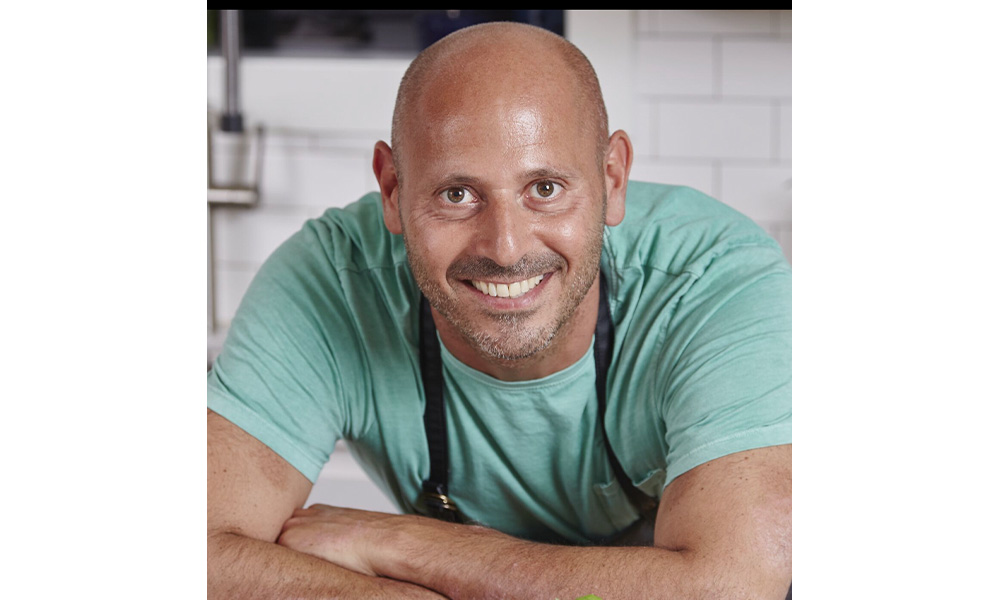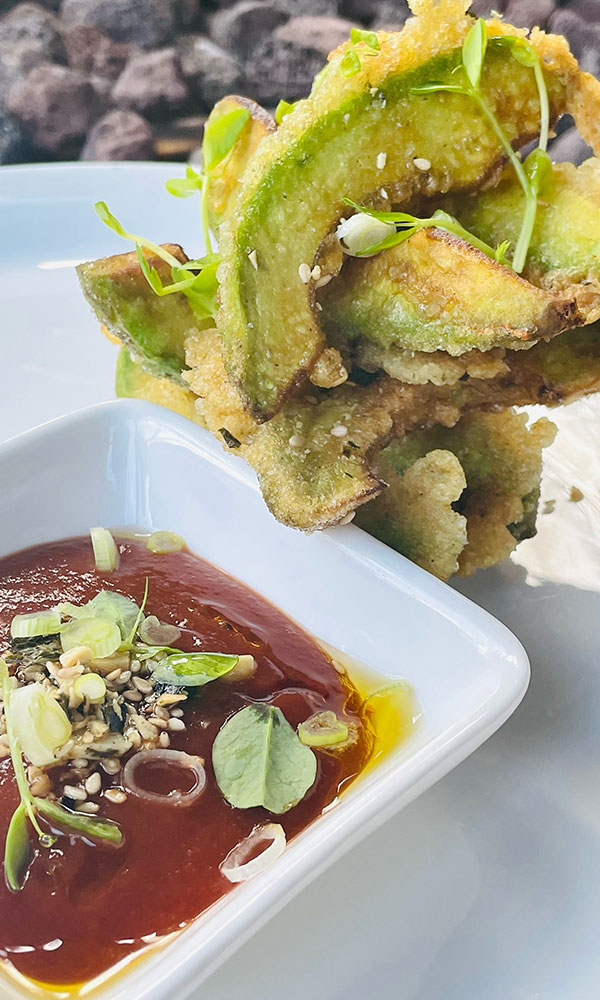There are chefs who cook with cannabis, then there are James Beard-nominated chefs who cook with cannabis. Toronto-based culinary master Jordan Wagman is in the latter category. For the uninitiated, receiving a James Beard nomination is very much akin to an Oscar nomination for acting. It’s a big deal (as all you Top Chef fans know). But this chef was on a mission.
“It all comes back to my health,” Wagman says when asked about his journey to becoming one of the planet’s most renowned cannabis food masters who famously whips up world-class fare that’s wellness-focused and sugar-free.
“I was 12 years old when I was diagnosed with psoriasis, and from then on, every decision I made in my life revolved around my skin,” Wagman says, referring to the skin disease that causes painful red, scaly patches and is widely treated with UV sunlight exposure. “I completed every high school exam in the hospital.”
“I lived in a tent in Israel for a year and a half getting sun for 14 to 15 hours a day near the Dead Sea. Every vacation, I went to the islands. I moved to California. I moved to Florida. So, clearly, I was always chasing the sun.”
And while he found the sun wherever he went, Wagman also found kitchens, turning a longtime passion for cooking over campfires into a career in some of the country’s best spots. After working at several renowned restaurants in Florida and California, Wagman found his way to the historic Cliff House, a hotel in Colorado Springs, where he received that rare James Beard Award nomination for his work steering the kitchen.
But as the long hours and exhaustion of working began taking its toll on his mental and physical health, Wagman realized that cannabis had been in the background helping him all along. “Since I was very young, I was always playing with cannabis, cooking with it, smoking it; but at the same time, I was subject to the stigma,” he says. “As a father, I was trying to ‘set an example,’ but then I also realized that for decades, I’d been using cannabis for health and wellness. It wasn’t always just for enjoyment. From there, I became more comfortable, and I’ve spent the past seven years professionally using cannabis to help people change their lives for the better.”

As he began directing his career toward culinary cannabis, the chef sought other ways to improve his chronic psoriasis. Wagman says he found relief after removing both refined sugar and gluten from his diet. Consequently, he removed it from his cooking, too.
“Most of the time, we’re feeding people cannabis foodstuff that’s completely filled with refined sugar,” Wagman says, referring to the mainstream edibles marketplace overflowing with infused gummies and chocolates. “And what does sugar inevitably do to the body? It raises inflammation. And the intent with cannabinoids is to lower our inflammation. And are you really going to have all 10mg of those cannabinoids bioavailable? No. Your body wants to absorb the sugar way before it absorbs the cannabis. If you remove the refined sugar, you remove the barrier to absorption.”
During his private wellness-focused fine dining experiences, guests enjoy up to 15 courses and 20mg of cannabinoids over a three-hour period, which Wagman says leaves guests feeling great and not too high due to his whole-plant focus and the benefit of the entourage effect. “I employ cannabis and hemp in every part of my being, and everything I create for my clients is how I eat and drink myself, so I use cannabis in every form,” he says, citing dishes such as a terpene-infused strawberry puree and a toasted hemp seed mixture as examples of a whole-plant experience.
Wagman’s commitment to celebrating the benefits of the whole plant extends to his open dialogue about cannabis and mental health, a topic he explores on his podcast “In The Weeds,” which highlights “some of the greatest thinkers in cannabis and food, and demonstrates people’s success, yes, but also their challenges,” says Wagman. Featuring guests ranging from celebrity chef Janet Zuccarini to cannabis influencers/podcasters Mike Glazer and Mary Jane Gibson of Weed + Grub, “In The Weeds” brings out every side of the celebrated cannabis chef. “I cry a lot; I laugh a lot; I talk a lot,” Wagman says, laughing. “I’m not afraid to cry. I’m not afraid to tell someone’s story. I’m not afraid to apologize. It’s just me.”

Tempura Avocado With Infused Tomato Sauce
Ingredients
(makes two appetizers)
Infused Tomato Sauce
- ½ cup tomato sauce
- ¼ cup soy sauce
- 1 Tbsp tamarind syrup
- 1 Tbsp toasted sesame seeds
- 1 Tbsp pickled ginger
- ½ tsp toasted sesame oil
- ¼ tsp cannabis distillate*
- 1 nori sheet
In a blender, combine all ingredients and puree until smooth. Transfer to an airtight container and store in the refrigerator for up to one week.*
Potency in distillate varies. Add the amount that best suits your needs. I use distillate that is 20mg/ml, meaning this recipe has a total of 20mg THC.
Tempura Batter
- 1 ½ cup potato starch, divided
- ½ tsp baking powder
- ¼ tsp sea salt
- 300 ml carbonated water
In a mixing bowl, combine baking powder, sea salt and 1¼ cup potato starch, reserving the remaining ¼ cup. Whisk well to combine. Add carbonated water and whisk until smooth. The batter will be thin. Set aside to rest for ten minutes.
Tempura Avocado
- ¼ cup potato starch
- 3 cups avocado oil
- 1 ripe avocado1/3 tsp sea salt
Preheat avocado oil to 325F. Slice avocado into wedges and place into potato starch to thoroughly coat. Dip coated wedges into the tempura batter and, one at a time, place into the warm oil. Fry avocado until golden brown, about one or two minutes. Remove from heat and place on a lined baking sheet. Season with salt. Serve immediately alongside tomato sauce
Distillate 101
When making cannabis-infused foods, there are several ways you can work with the plant. You can make your infusions from whole flower, or you can use a cannabis concentrate. Distillate is a popular choice for infusions because of its neutral flavor profile and pure potency of THC.
There are a variety of techniques manufacturers use to produce distillate through a series of solvent-based reactions that separate cannabinoids, terpenes and flavonoids from plant materials. The resulting crude oil is then distilled into pure THC, stripping all other compounds, including any remnants of the solvents used in the extraction process. Because of how it’s made, most distillate is already decarboxylated, making it simple to add to an infusion base.
This story was originally published in the print edition of Cannabis Now.
Source link
#Jordan #Wagman #Chasing #Sun